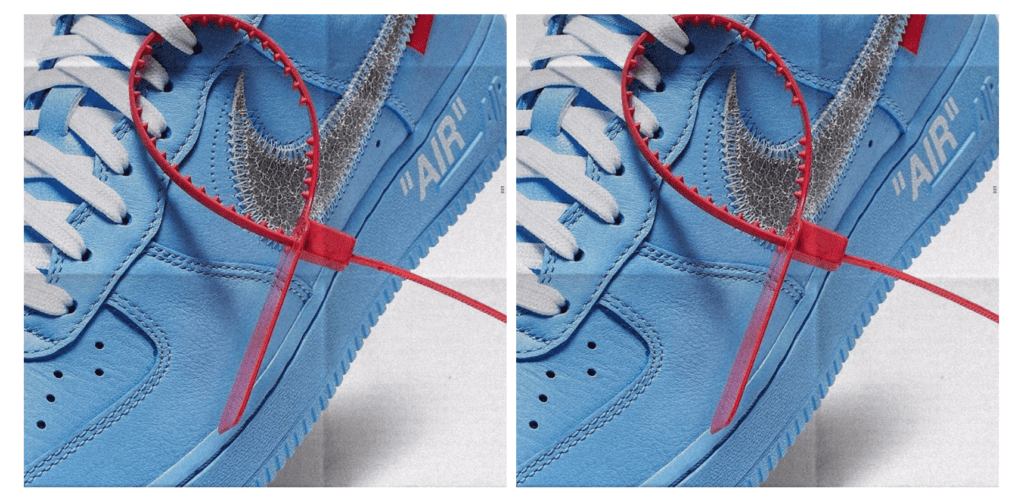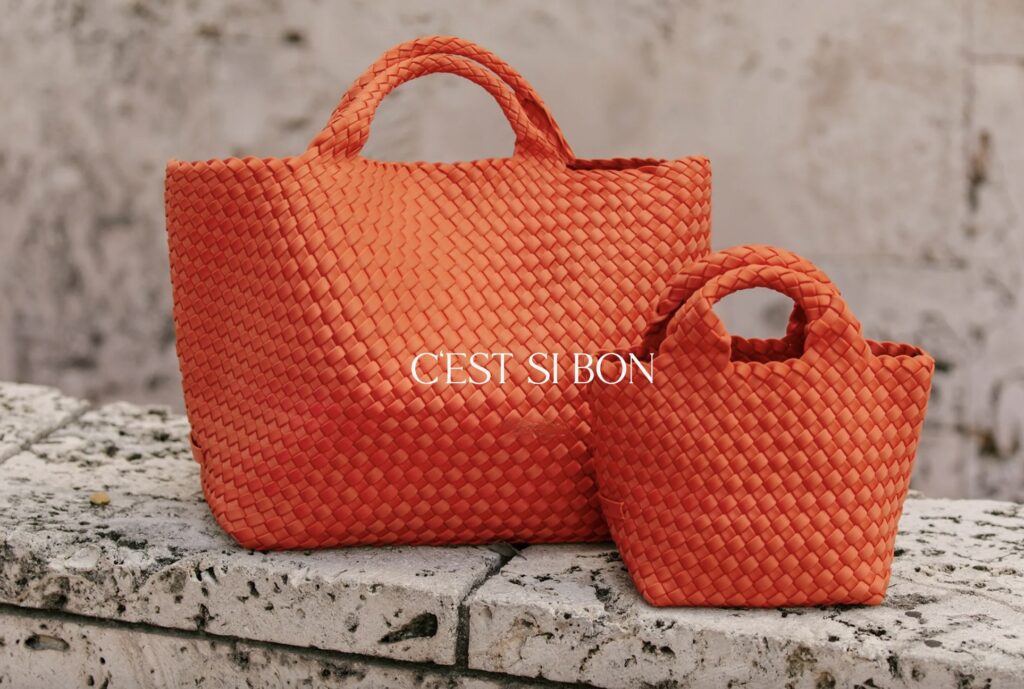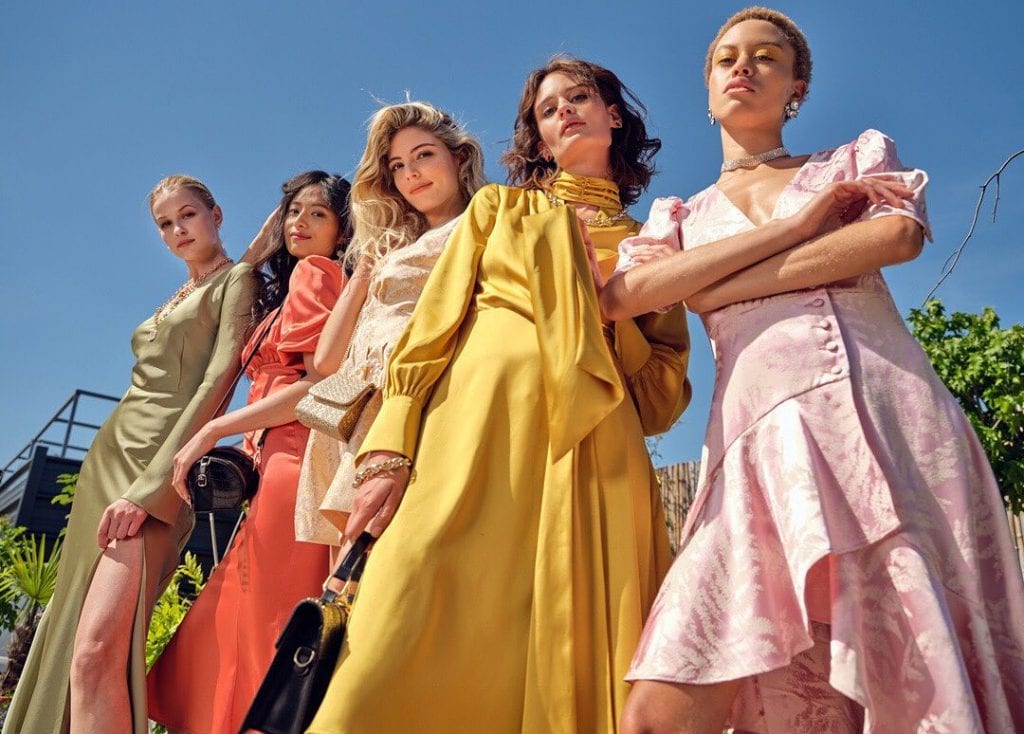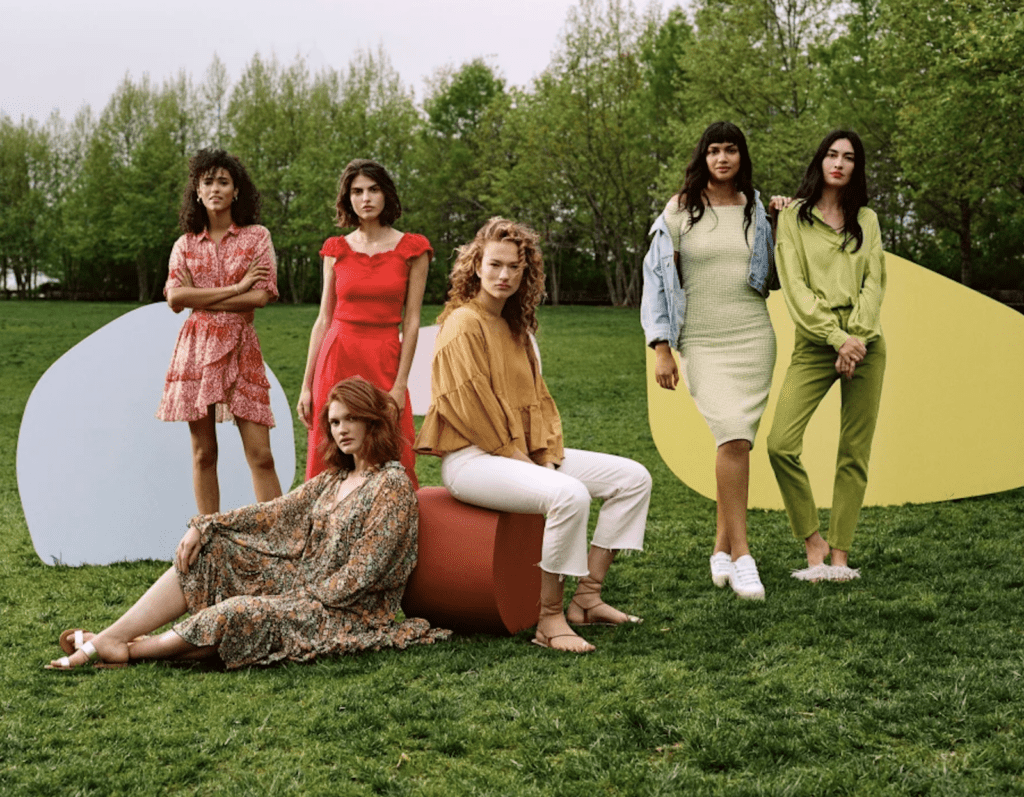Fashion industry trademarks almost exclusively take the form of word marks and logos, maybe a specifically placed color (a la Christian Louboutin) or the appearance a truly iconic design, such as a Birkin bag. With the influx of new(ish) designers, a new breed of trademarks seems to be afoot. Put aside Virgil Abloh’s pending attempt to secure a trademark registration for the use of quotation marks and look instead at another quest by the Off-White founder to claim rights in something of an unconventional indicator of source: red zip ties.
Last summer, as die-hard Virgil Abloh fans were clamoring to get their hands on the latest drop of Off-White x Nike sneakers, Abloh’s legal counsel was taking steps to claim exclusive rights in the “red zip tie” for use on “handbags, wallets, [and] backpacks,” and “tops, bottoms, headwear, [and] footwear” by filing an application for registration with the U.S. Patent and Trademark Office (“USPTO”).
That application for registration is still pending before the USPTO, following the June 2019 response from Abloh’s counsel to the U.S. trademark body’s preliminary refusal to register the mark due to the likelihood of confusion that it poses in connection with two already-registered marks for the word “Red” for use on snowboard company Burton’s wares, including “clothing for athletic use,” among other things.
According to the USPTO’s examiner, while Burton’s “Red” word marks and Abloh’s red zip tie might not lookalike, they “are similar in commercial impression because they evoke a similar mental reaction concerning the color red,” thereby, leading to a chance that consumers might confuse the parties’ marks. Such confusion which runs afoul of the purpose of trademark law, which is to distinguish different parties products by way of trademarks, which can take the form of “any word, name, symbol, device, or any combination [thereof],” according to the USPTO.
More than that, the trademark examiner asserted that Abloh’s zip tie mark is not registerable because it the “configuration of the zip tie,” itself, is functional, and it is well-established that “functional matter cannot be protected as a trademark,” as the USPTO does not want to “inhibit legitimate competition by allowing [a single party] to control a useful product feature.”

While it is still yet to be seen whether Abloh will walk away with a registration for the red zip tie, he has, nonetheless, seemingly given rise to what might become a budding trend towards other less-than-conventional trademarks. Look no further than Abloh’s sister brand Palm Angels, which is similarly produced by the Italian company New Guards Group, along with Off-White, Heron Preston’s eponymous collection, Alanui, A Plan Application, Ben Taverniti Unravel Project, and Hood by Air.
Early last year, Palm Angels founder Francesco Ragazzi trotted out a collection during Milan Fashion Week that was – as Vogue’s Amy Verner called it – “an exercise in mashing up the disparate influences of unadulterated punk with the American Midwest.” More striking than the Cher Horowitz yellow plaid separates and the denim Wranglers complete with statement belt buckles were the plastic clothing security pins in the mix. A black one could be spotted on a bomber jacket, a red one near the lapels on a buttoned-up shirt. A light gray one was affixed to the fronts of blouses. In fact, 9 of the 37 looks from the brand’s Fall/Winter 2018 collection bore little anti-theft pins in conspicuous places.
A season later, they made a return to the Palm Angels runway, where bright orange and light gray pins found their way onto the knitted hats resting atop the models’ heads.
Interestingly enough, the little pins made the transition from runway to retail by way some of Palm Angels’ more commercial wares – the ones actually being offered up for sale after the dénouement of the runway shows. On a $275 t-shirt, opposite the name Palm Angels positioned right below the wearer’s left clavicle is a “detachable pin in yellow featuring text and logo engraved in black and red.” A $570 metallic silver shopper tote bears a red one with the Palm Angels logo on it.
Meanwhile, Heron Preston, another brand under the New Guards umbrella, is busy affixing fabric tags that read “PULL” to many of its products – from the loops affixed to the heel tabs of sneakers to the flaps of handbags and the hardware of industrial belts. While the tabs, themselves, are certainly functional on certain products, such as when they are affixed to zippers, the “PULL” language arguably is not.
Unlike in patent law, for instance, novelty is not a prerequisite for trademark rights. This means that even though Palm Angels is not the creator of the security pin, nor is Preston the inventor of a tab that says “PULL, that, alone, is not a bar to protection. It is why, after all, Apple, for example, maintains rights in its name for use in connection with tech, retail service, and various other things. The Cupertino-based tech titan did not invent the word but was the first to use it consistently in commerce on tech-related products and services.
Even without an absolute bar against non-novel trademarks, both Ragazzi and Preston will inevitably face some hurdles (just as Abloh is with his zip tie mark) should they opt to file trademark applications for registration (which they have not done to date) and assuming they are, in fact, using these things to indicate the source of their products or in other words, using them in a trademark capacity.
There might be an argument to be made that by making repeated use of these things – whether it be a security pin, a “PULL” tab, the red zip tie, or the paper clip pull-tabs that Abloh included in his very recent Spring/Summer 2020 collection – these designers are causing consumers to link those elements to these particular brands. Such a link between a name, logo, symbol, color or some combination thereof (i.e., a trademark) and a single source (for specific classes of goods/services) is precisely what gives rise to trademark rights in the first place.
As for whether the fact that particularly in-the-know fashion and streetwear consumers (as opposed to a larger pool of “average” consumers) are primarily the ones who link these elements to these certain brands is enough to earn those trademark rights, that is another matter entirely; such use and relatively limited secondary meaning arguably does not meet the relevant trademark law prerequisites.
More than that, even if there are rights to be gained here (and there’s not saying that there are), they would undoubtedly be limited in scope. For Palm Angels, for example, such rights would extend only to a security pin with the Palm Angels name on it (which is much narrower protection than the use of a plain security pin), as that is how the brand is using the pin in commerce. Such protection would also be limited specifically to the products upon which these marks are being used: so, in connection with garments and accessories, maybe retail services.
Regardless of any potential outcomes, it is interesting to see how brands – led largely by streetwear ones – are looking to alternative elements to distinguish their products from those of others, particularly in the overtly image-driven age of Instagram. And in Abloh’s case, in furtherance of what is generally understood to be his attempt to “recontextualize” fashion and what is acceptable/desirable subject matter.
Updated: This article was updated to make note of Abloh’s counsel’s June 2019 response to the USPTO’s Office Action.











